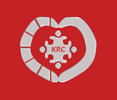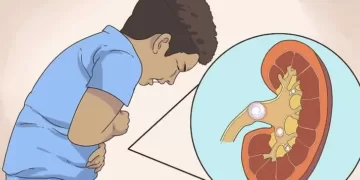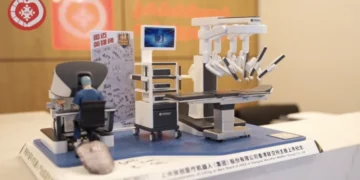A hydrocele, also known as a testicular cyst, is actually a cyst in the lining of the testicle.
With this pathology, serous fluid accumulates between the parietal and visceral sheets of the inner lining of the testicle, due to which the testicle increases in size on the corresponding side.
The volume of accumulated fluid ranges from 20 to 200 ml, rarely reaching 1-3 liters.
The disease occurs in both children and adults. Congenital hydrocele is usually diagnosed in children, acquired – in adults.
The diagnosis is made on the basis of visual examination, diaphanoscopy and ultrasound (echoscopy) examination. Treatment is predominantly surgical.
Why does a congenital hydrocele develop?
As a result of development and formation during pregnancy, the testicle descends through the inguinal canal into the scrotum. Together with it, a part of the peritoneum descends into the scrotum (it is also called a vaginal overgrowth of the abdominal wall).
After the scrotum is lowered, the lumen between the peritoneum and the vagina closes. If this process is disturbed, the fluid that is produced in the abdominal cavity will enter the scrotum and accumulate there.
The cells of the visceral layer of the vaginal growth themselves secrete fluid. When closing (expanding) the lumen between the peritoneum and the vaginal process, the fluid also accumulates between the sheets of the testicle and dropsy develops.
This lumen is open in 80% of newborn boys. By the age of one and a half years, this lumen becomes fleshy (closes) in most children. Accordingly, when testicular hydrocephalus is detected with modern urological approaches, children under 18 months of age are not treated.
The fluid in the testicles may disappear by itself, the fluid will resolve itself after healing-closing of the lumen.
Acquired hydrocele – testicular cyst
The cause of acquired hydrocephalus is mainly an imbalance between the production and absorption of the fluid secreted by the seed coat itself. This imbalance is promoted by injuries of the scrotum and its organs, a tumor, an inflammatory process, as well as a violation of the outflow of lymph from the scrotum.
What are the symptoms of a hydrocele?
Acute gonorrhea is characterized by a sharp increase and soreness of the scrotum, and hyperthermia is also not uncommon.
Chronic gonorrhea may be the result of an acute process or be caused by a chronic pathology of the testicle and its appendages.
In chronic hydrocele, the patient is concerned about the feeling of heaviness in the scrotum. The damaged area is enlarged.
With congenital hydrocephalus, the scrotum increases in size during the day, and decreases at night, during sleep. With an acquired hydrocele, the volume of the seed coat does not change.
Chronic dropsy proceeds for a long time without pain and urination disorders.
The fluid usually accumulates slowly (the scrotum is slightly enlarged at this time), but it can accumulate all at once.
With a pronounced cyst, urination and sexual intercourse are disturbed, hypotrophy of the scrotum organs develops and spermatogenesis is disturbed.
Diagnostics
The diagnosis is made on the basis of a visual examination, diaphanoscopy (illumination of the scrotum) and ultrasound (ultrasound) examination. With the latter, the volume of liquid is determined, the condition of the seed and its appendage are assessed.
Treatment
Treatment of acquired hydrocele includes therapy for the underlying disease. The patient is advised to remain calm. Sports and other types of physical activity are not recommended.
To evacuate the fluid and introduce sclerosing drugs into the cavity of the hydrocele, a puncture is used.
Since the disease is prone to relapse, the main method of treatment is surgery. There are several methods of surgical treatment (for example, Winkelmann, Lord, Bergman, Ross).
Surgical treatment of congenital hydrocele in children under 1.5 years is not carried out.
Hospital EM-EM-TE — Gurama Karazanashvili Urological Center offers hydrocele treatment using methods that meet the standards of world medicine.











